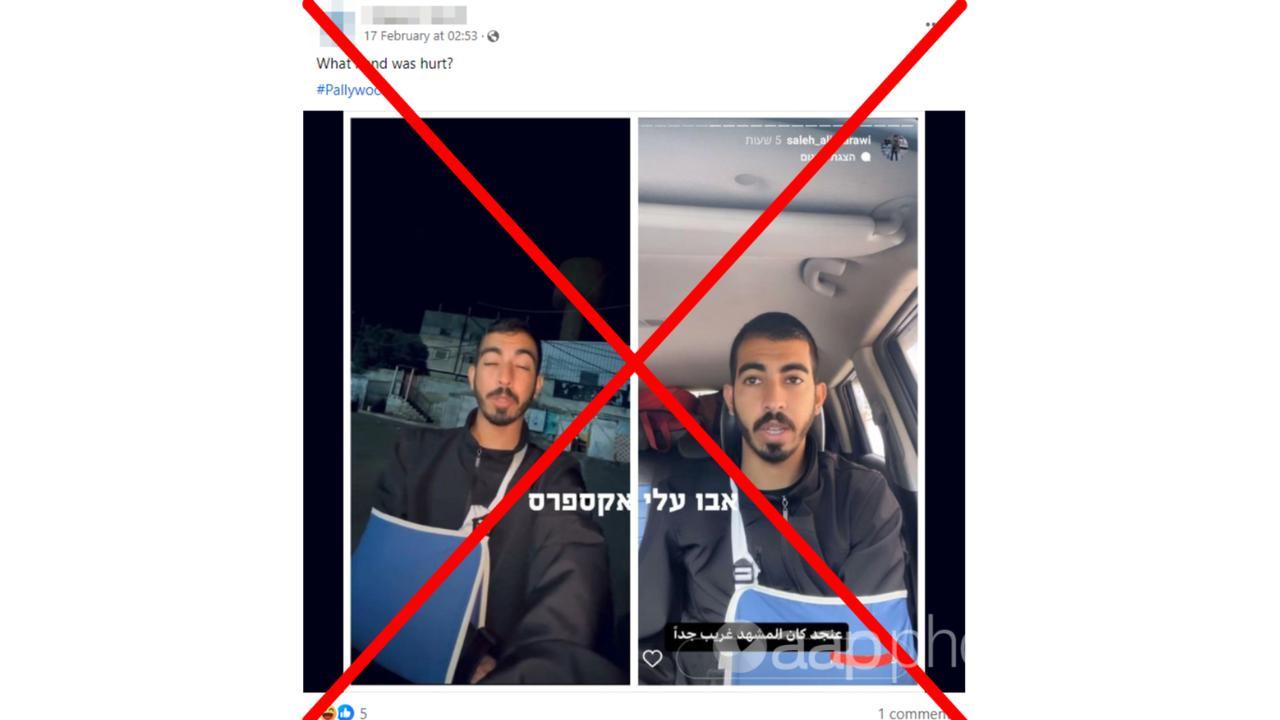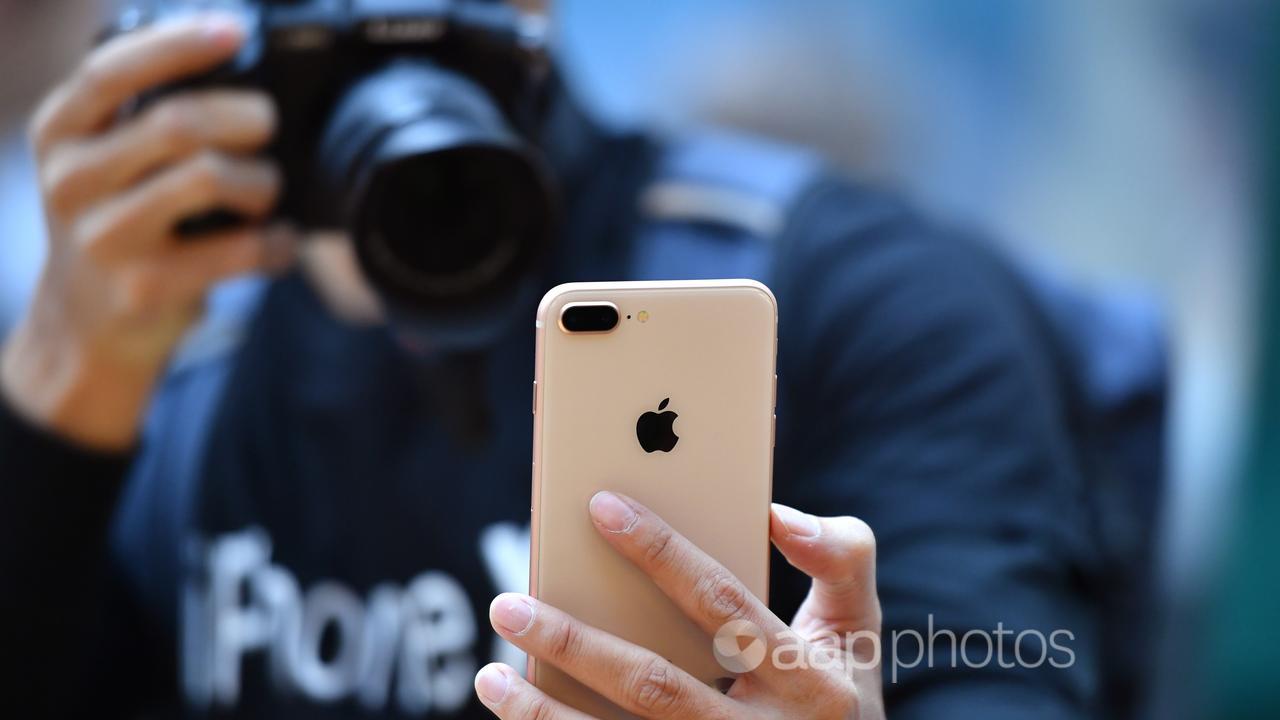A Palestinian photojournalist is accused of faking his war injury in photos where his sling is seen to be worn on different arms in separate images.
This is false. The sling appears on each arm due to the man using both the front-facing and rear cameras on his phone, with the images being flipped or reversed.
This is confirmed by several visual clues in the images.
The images, posted on Facebook and X accounts in February, were taken from videos posted over the two previous days to TikTok and Instagram by Gaza-based photojournalist Saleh Aljafarawi, who received shrapnel wounds to his right hand.

One image taken on a mobile phone camera shows his right arm in a sling, whereas the other used the front-facing camera, showing his left arm in a sling.
In one Facebook post, a user posted text saying “What hand was hurt?” along with the hashtag #Pallywood.
Pallywood is a portmanteau of “Palestine” and “Hollywood” and is used to suggest Palestinians are manipulating media and even using crisis actors to fake injuries and deaths in order to garner international support in the Israel/Gaza conflict.
Online video-making website Klip explains that when you record a video on a front-facing camera, while the live vision appears correct, the recorded video is flipped.
The reason is the camera is not like a mirror, but rather like a person looking at you. The camera captures a reverse image, but live video does not appear flipped.
AAP FactCheck was able to identify two visual clues which confirm Aljafarawi is not wearing the sling on different arms.
The first, in the video posted to TikTok, is a small dark mark on the nail of the middle finger on his left hand, which you can see at the 9-second mark. This same mark is seen at the 5-second mark of another video posted on X soon after Aljafarawi was injured.
Although the sling appears on different arms in the two videos, the fingernail mark is on the hand without the sling on both occasions.
In both videos his hair is parted towards the right, and always falls on the same side as the sling.
Aljafarwi responded to the rumours on his TikTok account on February 17, showing what it looked like when he was filming with his front-facing camera and then when he flipped the camera to use the rear lens.
Farid Farid, an Arabic-speaking news journalist at Australian Associated Press (AAP), the parent organisation of AAP FactCheck, translated the clip.
“This way, my left hand appears like this. I don’t know how,” Aljafarawi says before flipping the camera.
“And then here it shows my right hand. The camera is what reverses the image. Here’s the right and now here’s the left.”
The Verdict
The claim images of a Palestinian photojournalist wearing a sling on different arms prove he is faking war injuries is false.
He is wearing the sling on the same arm on all occasions. However, the image has been reversed as the man used both the front-facing and rear camera on his phone.
This is confirmed by visual clues including his hair parting and a mark on his finger.
False – The claim is inaccurate.
AAP FactCheck is an accredited member of the International Fact-Checking Network. To keep up with our latest fact checks, follow us on Facebook, Twitter and Instagram.
All information, text and images included on the AAP Websites is for personal use only and may not be re-written, copied, re-sold or re-distributed, framed, linked, shared onto social media or otherwise used whether for compensation of any kind or not, unless you have the prior written permission of AAP. For more information, please refer to our standard terms and conditions.


















